#most efficient solar panels
Text
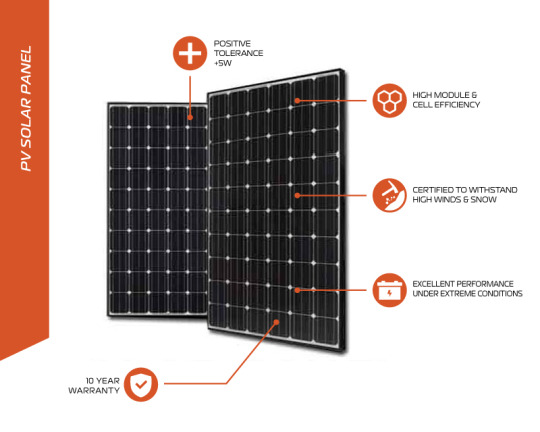
☀️ Harness the power of the sun with Earthtrack's high-performance PV solar panels! Built tough to withstand extreme conditions, they come with a 10-year warranty for peace of mind. Featuring positive tolerance, high efficiency, and excellent performance, our panels deliver reliable power output. Trust Earthtrack for quality and durability. 🌟
#pv solar panel#most efficient solar panels#pv panels#solar pv#photovoltaic panels#solar pv system#photovoltaic system#commercial solar panel#solar panels system#commercial solar panels for sale#solar photovoltaic system#pv panels for sale#solar pv suppliers#solar pv near me#best commercial solar panels#solar pv companies#commercial solar panel manufacturers#commercial pv installations#photovoltaic panels for sale#pv solar power#solar photovoltaic panel#pv solar power system#commercial solar pv#solar pv panel system#photovoltaic power system
0 notes
Text
The Best News of Last Year - 2023 Edition
Welcome to our special edition newsletter recapping the best news from the past year. I've picked one highlight from each month to give you a snapshot of 2023. No frills, just straightforward news that mattered. Let's relive the good stuff that made our year shine.
January - London: Girl with incurable cancer recovers after pioneering treatment

A girl’s incurable cancer has been cleared from her body after what scientists have described as the most sophisticated cell engineering to date.
2. February - Utah legislature unanimously passes ban on LGBTQ conversion therapy

The Utah State Legislature has unanimously approved a bill that enshrines into law a ban on LGBTQ conversion therapy.
3. March - First vaccine for honeybees could save billions

The United States Department of Agriculture (USDA) has approved the world’s first-ever vaccine intended to address the global decline of honeybees. It will help protect honeybees from American foulbrood, a contagious bacterial disease which can destroy entire colonies.
4. April - Fungi discovered that can eat plastic in just 140 days

Australian scientists have successfully used backyard mould to break down one of the world's most stubborn plastics — a discovery they hope could ease the burden of the global recycling crisis within years.
5. May - Ocean Cleanup removes 200,000th kilogram of plastic from the Pacific Ocean

The Dutch offshore restoration project, Ocean Cleanup, says it has reached a milestone. The organization's plastic catching efforts have now fished more than 200,000 kilograms of plastic out of the Pacific Ocean, Ocean Cleanup said on Twitter.
6. June - U.S. judge blocks Florida ban on care for trans minors in narrow ruling, says ‘gender identity is real’

A federal judge temporarily blocked portions of a new Florida law that bans transgender minors from receiving puberty blockers, ruling Tuesday that the state has no rational basis for denying patients treatment.
7. July - World’s largest Phosphate deposit discovered in Norway

A massive underground deposit of high-grade phosphate rock in Norway, pitched as the world’s largest, is big enough to satisfy world demand for fertilisers, solar panels and electric car batteries over the next 50 years, according to the company exploiting the resource.
8. August - Successful room temperature ambient-pressure magnetic levitation of LK-99

If the claim by Sukbae Lee and Ji-Hoon Kim of South Korea’s Quantum Energy Research Centre holds up, the material could usher in all sorts of technological marvels, such as levitating vehicles and perfectly efficient electrical grids.
9. September - World’s 1st drug to regrow teeth enters clinical trials

The ability to regrow your own teeth could be just around the corner. A team of scientists, led by a Japanese pharmaceutical startup, are getting set to start human trials on a new drug that has successfully grown new teeth in animal test subjects.
10. October - Nobel Prize goes to scientists behind mRNA Covid vaccines

The Nobel Prize in Physiology or Medicine has been awarded to a pair of scientists who developed the technology that led to the mRNA Covid vaccines. Professors Katalin Kariko and Drew Weissman will share the prize.
11. November - No cases of cancer caused by HPV in Norwegian 25-year olds, the first cohort to be mass vaccinated for HPV.
Last year there were zero cases of cervical cancer in the group that was vaccinated in 2009 against the HPV virus, which can cause the cancer in women.
12. December - President Biden announces he’s pardoning all convictions of federal marijuana possession

President Joe Biden announced Friday he's issuing a federal pardon to every American who has used marijuana in the past, including those who were never arrested or prosecuted.
------
And there you have it – a year's worth of uplifting news! I hope these positive stories brought a bit of joy to your inbox. As I wrap up this special edition, I want to thank all my supporters!
Buy me a coffee ❤️
Merry Christmas and Happy New Year!
6K notes
·
View notes
Text
There are so many tech startups with a Great Idea for indoor vertical farming and they keep crashing and burning and yet people keep investing in indoor vertical farming because it is "The next big thing" according to some ass backwards whacko conception of the universe where industrial monoculture agriculture is already the most efficient and sustainable possible use of land that could ever exist and its not even worth investigating foolish things like "Any of the agriculture systems practiced on the planet except modern industrial monoculture" or "Thousands of edible plant species that exist and could be used as crops"
the idea that will solve world hunger and preserve ecosystems, supposedly, is simply to stack plants in layers and layers on top of one another in these shelf type structures in a giant warehouse, shining electrical lights on them so they can grow.
Of course it is a glaring problem that it takes massive amounts of fossil fuels to run the electricity, basically replacing solar power used in normal agriculture (the sun) with fossil fuels, which is the opposite of what we need to be doing.
So they say, "Worry not! We can generate the electricity with solar farms!" at which point I perhaps need to study more deeply to comprehend the business model of building an array of solar panels to provide energy for a solar-powered facility in order to grow the already solar-powered plants (creatures which already have solar panels on them from birth)
2K notes
·
View notes
Text
Ignition
Once the Galactic Coalition had (without other realistic options) given Humanity an equal position among the governing bodies, despite the fact they were a single planet race, the initial dread of what they would do eased. A little. When they showed how they powered their impossibly massive vessels, the fears of our ancestors who deemed the Responsibility Barrier a necessity reemerged a thousandfold.
The Humans, with a slight grin, said "Solar power, of course."
They took a delegation within the bowels of one of their smaller, civilian research craft, which was still bulkier, better armored, and more worryingly - better armed than most flagships of the other predator-races. Were we not able to see with our own eyes their actual, what they aptly call, Dreadnoughts, from distances you would normally need a telescope, we would have assumed this was their mightiest warship. Yet it was just one of hundreds.
As we passed through the ludicrously thick and seemingly excessive number of bulkheads and shielded and compartmentalized hallways, the ever present hum of raw power beneath our feet gradually became nerve-wracking. What is that? It reminded us of stories told by those who traveled near Black Holes - of the sheer vastness and infinite apathy they felt from the all consuming entities.
A dozen or so biometric gates later, we were greeted by a gigantic sphere, easily a hundred and fifty meters in diameter, an abomination of reinforced panels, wiring, heat pumps, and countless tubes, hanging from numerous power conduits in the middle of an even more massive chamber from behind our observation platform. A true, pure fusion reactor. And there were Humans, in full protective suits at least, working directly next to it within the ominous chamber.
"We wanted to give you a demonstration of our advances in the past millennia, so please observe as we turn on this one."
This one? As in... the power we were feeling was not from this monstrosity? We had to ask.
"Oh, of course not, this ship has three such reactors, we recently performed a full maintenance on this and decided to delay reactivating it for you to see."
The delegates' mouths (or equivalents) were agape. Sure, nuclear fusion is known far and wide, but due to it's high potential for cataclysmic failure, or worse, deliberate destruction, the vast majority of such reactors were mostly found in deep space stations where solar radiation was scarce. Background radiation converters, while efficient at what they do, were nowhere sufficient enough for anything more than as passive emergency battery chargers. And no civilization kept fusion reactors anywhere near populated or colonizeable planets.
Yet here they were, looking at one nearly five times larger than any other known or attempted. And there were three on this ship alone. They counted hundreds of similar size, a few dozen of their Dreadnoughts, thousands of smaller vessels ferrying between the stations, the surface, and other larger ships. Countless world ending bombs-in-waiting right around the Humans' only home.
"Yeah, us science ships get the biggest ones, kinda need the extra oomph for our projects. The military kids like their redundancies, so theirs are smaller."
A slight relief.
"I think their newest capital ship, the UGSF Caliban of York, has fifteen, each about half ours."
A few delegates passed out. Their attendants rushed to salvage some dignity, but Captain Knoslark of this vessel, The Radiant Dusk at Everest, didn't seem surprised or offended and simply waited for the delegation to regain composure before continuing.
"This is my favorite part."
He said quietly with a glint in his eyes, then his tone changed to a more formal and authoritative one.
"Chief Engineer Ira Tameki, status of Reactor 2."
"All green, Captain. She's ready to purr to life at your command."
"Good. Then," his tone shifted once again, to a far more theatrical one as he took a pose, half turning his body and extending his right hand towards the reactor, index finger pointing dramatically. As he pronounced every syllable of the next word, there was a silent resigned sigh from his crew:
"ignition!"
Outwardly, nothing of significance changed. The engineers clicked at their consoles, bars slowly rose and everyone was deliberately doing their best to make it clear they were ignoring the fact that the captain was still in the same pose.
There was a muffled thump from the chamber, then the hum beneath their feet became a rumble for a few moments before steadying back to a now slightly more intense almost-buzz. Physically, nothing all that noteworthy. Mentally, everyone in the delegation was in true shock as they fully understood what they had just witnessed done all too casually:
The birth of a star.
#humans are deathworlders#humans are space oddities#humans are space australians#humans are space orcs#humanity fuck yeah#carionto
494 notes
·
View notes
Text
Duel Disk Power Source Options:
Batteries (most likely imo, it is a children's toy)
Rechargeable battery, every duelist is plugging it in at night we just never see them
Those card slots are also tiny solar panels
Kaiba has invented stable miniaturized nuclear fusion and revolutionized energy production in order to play card games more efficiently. In the ygoverse all concerns about climate change have been averted by 2005
272 notes
·
View notes
Text
Solar Powered Community Fridges - Concept Art
So one of my grad school classes is a 8 week long group project to essentially come up with an artistic solution to a problem. Of course, my pitch was solarpunk in nature, and my group actually really liked it! Basically, the concept is to design a series of solar panel-powered community fridges, to help address food insecurity and build community in different areas without having to rely on a specific host building to provide power. What better time to show my concept art than Solarpunk Aesthetic Week?
Originally, I was just drawing up ideas with what usually comes to mind when I imagine fridges--upright fridges. Here's my concept art!

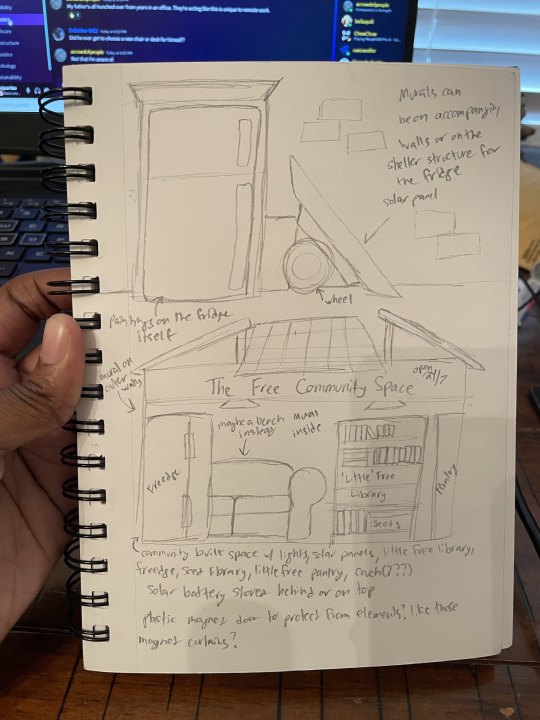

In these sketches, my main concern was imagining how these fridges would fit into the community alongside their power sources--I didn't want them to be too bulky, but I also wanted them to be available for easy access. I also figured they'd need shelter for the fridge's longevity, as well as to protect any users from the element. It'd also be nice to have them alongside other mutual aid sources like little free pantries, little free libraries, the like. One of my favorite designs is the sheltered community space on page 2, with the fridge, the seat, the pantry, and the library all in one protected structure with solar panels on the top. Having a table near the community fridge would also be nice to give people a place to rest as well.
However, around this time, I started trying to find out just how big of a solar panel would be needed to power a fridge like this, and the results were... a bit discouraging. Until! I was informed that chest freezers use way less energy to keep cool--cool air sinks, so opening an upright fridge releases most of the cold air that's been building up and makes the machine work harder to keep cool, whereas a chest fridge doesn't lose nearly as much cold air. In addition, some people have converted chest freezers into chest refrigerators for as little as ~$30 USD. Due to the insulation in a chest freezer, converted chest fridges use way less energy than their upright counterparts to keep cool, making it way more feasible to power them with solar.
So of course, I had to get to drawing again!
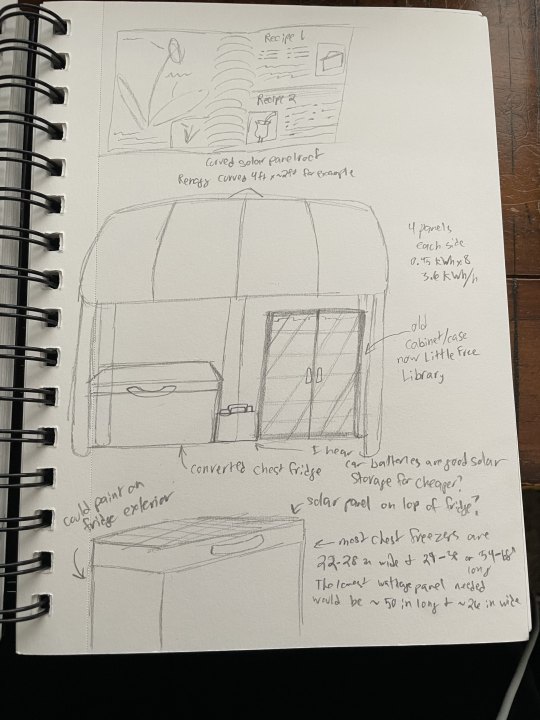
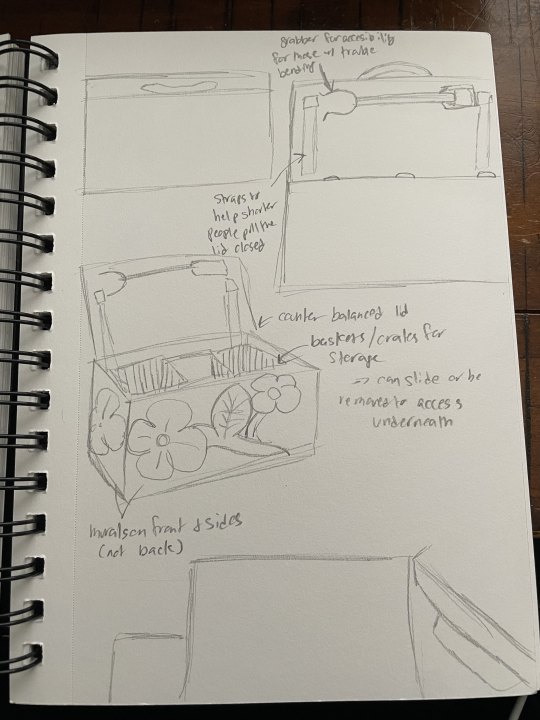
Since I'd already concepted a variety of structures for upright fridges, for the chest fridges I mostly focused on their design and possible convenience/accessibility concerns I had been worried about, one of the main being having to reach inside vertically instead of horizontally--several of my family members have difficulty bending, so I was worried having a chest fridge would make things more difficult for others like them. There are likely other ways to address this concern that I haven't thought of, but for now I've concepted putting a grabber tool inside of every fridge so people with trouble bending can still get things. How well it'd work in reality, I'm not sure...
Buuut these are my concepts so far! I hope you like them, I hope they're cool? Let me know what you think! I think these would be cool to have in a solarpunk future--whether they're entirely possible today or will have to wait until a somewhat-distant, 'solar panels can generate more energy with less size and fridges are also way more energy efficient' future I can't say, but it's cool to think about!
[Image 1: Pencil sketches of refrigerators connected to solar power. The annotations on them are as follows. An arrow points to a magnet caddy on the freezer door with markers and stickers, saying "Markers + labels for dating donations". An arrow points to a battery-structure at the base of a solar panel system saying "Doubles as charging station for phones & stuff". An arrow points to a slanted roof structure over a fridge saying "Bus stop-esque structure." An arrow points at a glass door grocery store-style fridge saying "any kind of fridge, any size."
Image 2: Pencil sketches of refrigerators connected to solar power. The annotations on them are as follows. An arrow points to a fridge under a slanted roof structure, saying "Paintings on the fridge itself." Over a portion of a brick wall is written "Murals can be on accompanying walls or on the shelter structure for the fridge." An arrow points to a wheel-mounted solar panel saying "solar panel". A community space is named at the top "The Free Community Space: Open 24/7" An arrow points to the outside wall of a community space structure saying "mural on outer walls". Items inside are labeled 'Freedge, Little free Library, Seeds, Pantry'. An arrow points to a couch, saying "Maybe a bench instead?" Written on the inner wall is "mural inside." An arrow pointing at the space says "Community built space w/ lights, solar panels, little free library, freedge, seed library, little free pantry, couch (???). Solar battery stored behind or on top. Plastic magnet door to protect from elements? Like those magnet curtains?"
Image 3: Pencil sketches of refrigerators connected to solar power. The annotations on them are as follows. An arrow points to a slanted structure over a mini fridge, saying "Solar panel on roof?" Another arrow points to the side saying "Chalkboard paint--anyone can art here." Underneath says "variety of sizes/energy needs mean wider availability". At the top of a curved shelter on a pole is written "solar panel", along the sloping sides is "curved solar panels" and "Or solar voltaic glass?" On the underside of the structure is a label saying "Could be in a park or smth (something)". An arrow points to a box at the base of the structure, saying "charging station" and another arrow labels a table and chairs.
Image 4: Pencil sketches of refrigerators connected to solar power. The annotations on them are as follows. Along the top of a slightly-curved roof structure is an arrow saying "curved solar panel roof. renogy curved 4ft x 2ft for example". To the side of the roof is written "4 panels each side, 0.45 kWh x 8 = 3.6 kWh/h". A chest fridge is labeled "converted chest fridge", and a glass-front box is labeled "Old cabinet/case now Little Free Library". A box sitting between them is labeled "I hear car batteries are good solar storage for cheaper?" A standalone chest fridge has the following labels: "Could paint on fridge exterior" "solar panel on top of fridge?" "most chest freezers are 22-28 in wide &24-38 or 54-68 in long. The longest wattage panel needed would be ~50 in long & ~26 in wide"
Image 5: Pencil sketches of refrigerators connected to solar power. The annotations on them are as follows. The inside of an open lid has an arrow pointing to a grabber object saying "Grabber for accessibility for those w/ trouble bending". A label points at a strap fastened to the inside of the lid saying "straps to help shorter people pull the lid closed." A variety of arrows point to a drawing of an open, decorated chest fridge saying the following: "Counter-balanced lid" "Baskets/crates for storage -> can slide or be removed to access underneath" "Murals on front & sides (not back)" ]
#solarpunk#solarpunk aesthetic week#community fridge#freedge#concept design#solar panels#solarpunk community#sustainability#ani rambles#out of queue#one could easily argue they'd be more Aesthetique if I had colored them and i totally agre#i just couldn't get the colored versions to give off the Vibe I wanted on digital so pencil sketches we go#my art#solarpunkani art
234 notes
·
View notes
Text
“They didn’t leave us air to breathe,” said Zawahri, 52, describing a months-long campaign of violence and intimidation that intensified in the last two weeks. First villagers were barred from grazing lands, and the spring, then violence reached their homes.
“They came into the village and destroyed houses and sheep pens, beat an 85-year-old man, scared our children. Slowly our lives became unlivable.”
A few men are trying to stay on amid the shells of homes, empty animal pens, smashed solar panels and broken windows, staking a fragile claim to their own village.
This was not an individual tragedy. Men from Angels of Peace are part of a broad, violent and very successful political project to expand Israeli control of the West Bank that has accelerated, say activists, since the 7 October attacks by Hamas launched a war with Israel.
The unlikely agents of this land grab are sheep and goats, herded by radical settlers on small outposts.
Taking land by building homes and communities on it is slow and expensive. Taking control of large swathes of dry hills needed to feed a herd of animals, by intimidating and isolating Palestinian shepherds and bringing in another herd, is much more efficient.
“This has been the most successful land-grab strategy since 1967,” said Yehuda Shaul, a prominent activist who is director of the Israeli Center for Public Affairs thinktank, and a founder of Breaking the Silence, an NGO that exposes military abuses in occupied areas.
145 notes
·
View notes
Text
“There are no forbidden questions in science, no matters too sensitive or delicate to be probed, no sacred truths.” Carl Sagan
Ecoinvent, the world’s largest database on the environmental impact of wind and solar technologies, has no data from China, even though it makes most of the world's solar panels
The UN IPCC and IEA have relied on Ecoinvent estimates of life cycle CO2 emissions from solar, but given China refuses to be transparent in their reporting, Ecoinvent fudged the numbers using values from EU and US manufacturing.
As a result, Chinese derived solar PV panels have life cycles in the range of 170 to 250 kg CO2 equivalent per MWh versus the 50 kg CO2 per MWh so commonly used by the IPCC and others in calculating CO2 emission offset credits and in climate modelling.
Consider that advanced combined cycle gas turbine power plants have CO2 emission factors ranging from 300 to 350 kg CO2 per MWh and use a much smaller fraction of the amount of non-renewable materials per unit of energy produced than do solar PV facilities.
It is a well known fact that paring natural gas turbine technologies in a load balancing subservient role to solar PV gives rise to reduced thermal efficiencies of the turbine system. Thereby acting to further reduce the emission reduction benefits of solar PV and its already small marginal difference with a stand alone natural gas system.
The moral of the story is carbon credits are a scam, as are modelling projections of the climate effects of solar PV technologies.
120 notes
·
View notes
Text
so
out in space, you need to find a way to constantly harvest energy to continuously accelerate
i dunno why you need to continuously accelerate, i feel like at some point you'd reach a speed and go, "yeah, that's fine," but whatever
most often, you do this by having an efficient fuel source, like xenon-ion engines, then having it charged with electricity harvested either from on-board power sources, like a nuclear fission reactor, or from an array of solar panels
OR
IF YOU WANNA BE FANCY
YOU CAN TAKE THAT STAR-SAILOR TITLE TO HEART AND LITERALLY SAIL ON THE SOLAR WIND OF LIGHT

FAVORITE CONCEPT
305 notes
·
View notes
Text
Let's talk Energy Mix

Let me talk about the energy mix for a moment - because I feel a lot of people are very unsure, how a renewable energy grid would work in practice.
So, let me get out my electrician gear and go very quickly through the different energy types that we would probably have within a Solarpunk world or something along the line. Or rather: What we might have in the future, if our governments actually fucking cared to go carbonfree.
Photovoltaic (aka Solar). Now, let me make one thing clear: Technically Photovoltaic and Solar are two different things. Photovoltaic uses certain materials that can build electricity when they interact with Photons, while Solar uses the sun's heat radiation. What most people think of as "Solarpower" is photovoltaic. This technology has made a lot of advances recently, making the panels so much more efficient than they were only a few years ago. By now photovoltaic roof tiles can actually provide enough energy for the house even during cloudy days and even further up north. Of course they cannot create enough energy during the night. While production is not 0, it is by far not enough.
Wind turbines. Currently wind turbines are making up a lot of the renewable energy mix in many countries, like my own (Germany). And for good reason. They are so darn efficient. Especially off-shore energy. While they are right now not useful for personal energy production (because turbines are fucking loud up close - only up close), they are really good at keeping the grid fed. Maybe just a bit too good.
Other forms of Wind Power. I really do not want to go too deeply into this topic. But there are currently also other forms of wind powered generators being researched. Including some that could be put onto houses. (If you want me to gover those more, just send me an ask.)
Hydro Power. Now Hydro Power, so water based power generation, has two big kinds of being used. One is by channeling the power of rivers through a generator - the other is as the currently simplest form of energy storage: If you have too much energy in your grid at any given time, pump water into a reservoir and if you need that power again, let it go through a generator. Please note though: Environmentally Hydro Power is definitely the kind of renewable power with the worst environmental impact.
Other forms of water based power generation: Currently we are experimenting a lot with getting power from the ocean. For example through tidal generators or wave generators. So far, though, these methods are only experiments, not fit for large scale production.
Geothermal Power. In a lot of areas with Geothermal activity we can also use the heat of the earth to create steam, which we then can use to power generators as well. This is especially handy in places like Iceland, that are geothermically very active, but also do not get a lot of sun half of the year and are not ideally suited for wind power.
One thing that should be noted is, that very probably we are still gonna need nuclear power as an emergency tool.
One thing that definitely needs to change, though, is how we build our energy grids. Currently we are relying a lot on macro grids, that is grids, where a few central power plants generate all the power for a large area. This does not work out well currently, based on the fact that a lot of renewables work best, if you have smaller, further distributed power plants.
This creates the need for micro grids, that are also better suited to just... Not create large scale blackouts, as the US experiences them semi-frequently.
Again, if you want me to talk more about that, I can totally do, just... send me a message.
But what you really do not need to be concerned about is the entire idea of "what do we do at night"? We have ways to deal with that. Even now. Let alone in 10 years. This area of science is currently really moving forward in long strides!
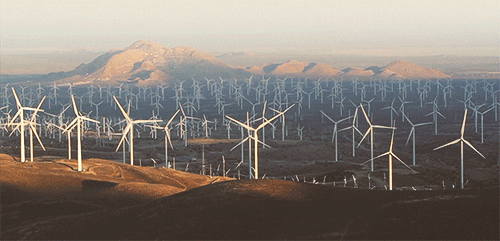
#solarpunk#lunarpunk#renewables#renewable energy#solar power#solar energy#photovoltaic#wind power#hydro power#energy mix
87 notes
·
View notes
Text
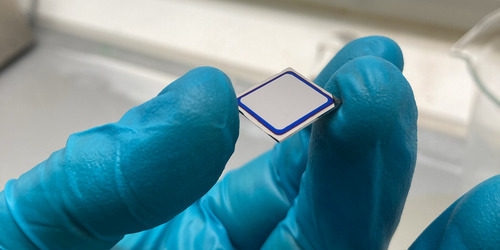
Testing a New Solar Sandwich
By combining the world’s oldest photovoltaic material with today’s most used one, researchers have taken a step toward next-generation solar devices.
[...]
Thanks to their reliability and cost, silicon-based devices have dominated the commercial solar-panel market for 50 years. But the sunlight–electricity conversion efficiencies of these devices are now nearing their theoretical limits. One challenging but promising way to increase this efficiency is to make solar cells from multiple materials with different photon-absorption properties, which would allow them to absorb more sunlight. Rasmus Nielsen of the Technical University of Denmark and his colleagues have done just that, demonstrating a solar cell that combines silicon with selenium, the first photovoltaic material to be discovered [1]. The researchers say that with updates, the performance of their selenium/silicon device could soon rival today’s best silicon cells.
Read more.
15 notes
·
View notes
Text
What comes after neoliberalism?

In his American Prospect editorial, “What Comes After Neoliberalism?”, Robert Kuttner declares “we’ve just about won the battle of ideas. Reality has been a helpful ally…Neoliberalism has been a splendid success for the top 1 percent, and an abject failure for everyone else”:
https://prospect.org/economy/2023-03-28-what-comes-after-neoliberalism/
If you’d like an essay-formatted version of this post to read or share, here’s a link to it on pluralistic.net, my surveillance-free, ad-free, tracker-free blog:
https://pluralistic.net/2023/03/28/imagine-a-horse/#perfectly-spherical-cows-of-uniform-density-on-a-frictionless-plane
Kuttner’s op-ed is a report on the Hewlett Foundation’s recent “New Common Sense” event, where Kuttner was relieved to learn that the idea that “the economy would thrive if government just got out of the way has been demolished by the events of the past three decades.”
We can call this neoliberalism, but another word for it is economism: the belief that politics are a messy, irrational business that should be sidelined in favor of a technocratic management by a certain kind of economist — the kind of economist who uses mathematical models to demonstrate the best way to do anything:
https://pluralistic.net/2022/10/27/economism/#what-would-i-do-if-i-were-a-horse
These are the economists whose process Ely Devons famously described thus: “If economists wished to study the horse, they wouldn’t go and look at horses. They’d sit in their studies and say to themselves, ‘What would I do if I were a horse?’”
Those economists — or, if you prefer, economismists — are still around, of course, pronouncing that the “new common sense” is nonsense, and they have the models to prove it. For example, if you’re cheering on the idea of “reshoring” key industries like semiconductors and solar panels, these economismists want you to know that you’ve been sadly misled:
https://foreignpolicy.com/2023/03/24/economy-trade-united-states-china-industry-manufacturing-supply-chains-biden/
Indeed, you’re “doomed to fail”:
https://www.piie.com/blogs/trade-and-investment-policy-watch/high-taxpayer-cost-saving-us-jobs-through-made-america
Why? Because onshoring is “inefficient.” Other countries, you see, have cheaper labor, weaker environmental controls, lower taxes, and the other necessities of “innovation,” and so onshored goods will be more expensive and thus worse.
Parts of this position are indeed inarguable. If you define “efficiency” as “lower prices,” then it doesn’t make sense to produce anything in America, or, indeed, any country where there are taxes, environmental regulations or labor protections. Greater efficiencies are to be had in places where children can be maimed in heavy machinery and the water and land poisoned for a millions years.
In economism, this line of reasoning is a cardinal sin — the sin of caring about distributional outcomes. According to economism, the most important factor isn’t how much of the pie you’re getting, but how big the pie is.
That’s the kind of reasoning that allows economismists to declare the entertainment industry of the past 40 years to be a success. We increased the individual property rights of creators by expanding copyright law so it lasts longer, covers more works, has higher statutory damages and requires less evidence to get a payout:
https://chokepointcapitalism.com/
At the same time, we weakened antitrust law and stripped away limits on abusive contractual clauses, which let (for example) three companies acquire 70% of all the sound recording copyrights in existence, whose duration is effectively infinite (the market for sound recordings older than 90 is immeasurably small).
This allowed the Big Three labels to force Spotify to take them on as co-owners, whereupon they demanded lower royalties for the artists in their catalog, to reduce Spotify’s costs and make it more valuable, which meant more billions when it IPOed:
https://pluralistic.net/2022/09/12/streaming-doesnt-pay/#stunt-publishing
Monopoly also means that all those expanded copyrights we gave to creators are immediately bargained away as a condition of passing through Big Content’s chokepoints — giving artists the right to control sampling is just a slightly delayed way of giving labels the right to control sampling, and charge artists for the samples they use:
https://doctorow.medium.com/united-we-stand-61e16ec707e2
(In the same way that giving creators the right to decide who can train a “Generative AI” with their work will simply transfer that right to the oligopolists who have the means, motive and opportunity to stop paying artists by training models on their output:)
https://pluralistic.net/2023/02/09/ai-monkeys-paw/#bullied-schoolkids
After 40 years of deregulation, union busting, and consolidation, the entertainment industry as a whole is larger and more profitable than ever — and the share of those profits accruing to creative workers is smaller, both in real terms and proportionally, and it’s continuing to fall.
Economismists think that you’re stupid if you care about this, though. If you’re keeping score on “free markets” based on who gets how much money, or how much inequality they produce, you’re committing the sin of caring about “distributional effects.”
Smart economismists care about the size of the pie, not who gets which slice. Unsurprisingly, the greatest advocates for economism are the people to whom this philosophy allocates the biggest slices. It’s easy not to care about distributional effects when your slice of the pie is growing.
Economism is a philosophy grounded in “efficiency” — and in the philosophical sleight-of-hand that pretends that there is an objective metric called “efficiency” that everyone can agree with. If you disagree with economismists about their definition of “efficiency” then you’re doing “politics” and can be safely ignored.
The “efficiency” of economism is defined by very simple metrics, like whether prices are going down. If Walmart can force wage-cuts on its suppliers to bring you cheaper food, that’s “efficient.” It works well.
But it fails very, very badly. The high cost of low prices includes the political dislocation of downwardly mobile farmers and ag workers, which is a classic precursor to fascist uprisings. More prosaically, if your wages fall faster than prices, then you are experiencing a net price increase.
The failure modes of this efficiency are endless, and we keep smashing into them in ghastly and brutal ways, which goes a long way to explaining the “new commons sense” Kuttner mentions (“Reality has been a helpful ally.”) For example, offshoring high-tech manufacturing to distant lands works well, but fails in the face of covid lockdowns:
https://locusmag.com/2020/07/cory-doctorow-full-employment/
Allowing all the world’s shipping to be gathered into the hands of three cartels is “efficient” right up to the point where they self-regulate their way into “efficient” ships that get stuck in the Suez canal:
https://pluralistic.net/2021/03/29/efficient-markets-hypothesis/#too-big-to-sail
It’s easy to improve efficiency if you don’t care about how a system fails. I can improve the fuel-efficiency of every airplane in the sky right now: just have them drop their landing gear. It’ll work brilliantly, but you don’t want to be around when it starts to fail, brother.
The most glaring failure of “efficiency” is the climate emergency, where the relative ease of extracting and burning hydrocarbons was pursued irrespective of the incredible costs this imposes on the world and our species. For years, economism’s position was that we shouldn’t worry about the fact that we were all trapped in a bus barreling full speed for a cliff, because technology would inevitably figure out how to build wings for the bus before we reached the cliff’s edge:
https://locusmag.com/2022/07/cory-doctorow-the-swerve/
Today, many economismists will grudgingly admit that putting wings on the bus isn’t quite a solved problem, but they still firmly reject the idea of directly regulating the bus, because a swerve might cause it to roll and someone (in the first class seats) might break a leg.
Instead, they insist that the problem is that markets “mispriced” carbon. But as Kuttner points out: “It wasn’t just impersonal markets that priced carbon wrong. It was politically powerful executives who further enriched themselves by blocking a green transition decades ago when climate risks and self-reinforcing negative externalities were already well known.”
If you do economics without doing politics, you’re just imagining a perfectly spherical cow on a frictionless plane — it’s a cute way to model things, but it’s got limited real-world applicability. Yes, politics are squishy and hard to model, but that doesn’t mean you can just incinerate them and do math on the dubious quantitative residue:
https://locusmag.com/2021/05/cory-doctorow-qualia/
As Kuttner writes, the problem of ignoring “distributional” questions in the fossil fuel market is how “financial executives who further enriched themselves by creating toxic securities [used] political allies in both parties to block salutary regulation.”
Deep down, economismists know that “neoliberalism is not about impersonal market forces. It’s about power.” That’s why they’re so invested in the idea that — as Margaret Thatcher endlessly repeated — “there is no alternative”:
https://pluralistic.net/2021/11/08/tina-v-tapas/#its-pronounced-tape-ass
Inevitabilism is a cheap rhetorical trick. “There is no alternative” is a demand disguised as a truth. It really means “Stop trying to think of an alternative.”
But the human race is blessed with a boundless imagination, one that can escape the prison of economism and its insistence that we only care about how things work and ignore how they fail. Today, the world is turning towards electrification, a project of unimaginable ambition and scale that, nevertheless, we are actively imagining.
As Robin Sloan put it, “Skeptics of solar feasibility pantomime a kind of technical realism, but I think the really technical people are like, oh, we’re going to rip out and replace the plumbing of human life on this planet? Right, I remember that from last time. Let’s gooo!”
https://www.robinsloan.com/newsletters/room-for-everybody/
Sloan is citing Deb Chachra, “Every place in the world has sun, wind, waves, flowing water, and warmth or coolness below ground, in some combination. Renewable energy sources are a step up, not a step down; instead of scarce, expensive, and polluting, they have the potential to be abundant, cheap, and globally distributed”:
https://tinyletter.com/metafoundry/letters/metafoundry-75-resilience-abundance-decentralization
The new common sense is, at core, a profound liberation of the imagination. It rejects the dogma that says that building public goods is a mystic art lost along with the secrets of the pyramids. We built national parks, Medicare, Medicaid, the public education system, public libraries — bold and ambitious national infrastructure programs.
We did that through democratically accountable, muscular states that weren’t afraid to act. These states understood that the more national capacity the state produced, the more things it could do, by directing that national capacity in times of great urgency. Self-sufficiency isn’t a mere fearful retreat from the world stage — it’s an insurance policy for an uncertain future.
Kuttner closes his editorial by asking what we call whatever we do next. “Post-neoliberalism” is pretty thin gruel. Personally, I like “pluralism” (but I’m biased).
Have you ever wanted to say thank you for these posts? Here's how you can do that: I'm kickstarting the audiobook for my next novel, a post-cyberpunk anti-finance finance thriller about Silicon Valley scams called Red Team Blues. Amazon's Audible refuses to carry my audiobooks because they're DRM free, but crowdfunding makes them possible.
http://redteamblues.com
[Image ID: Air Force One in flight; dropping away from it are a parachute and its landing gear.]
#pluralistic#crypto forks#economism#imagine a horse#perfectly spherical cows of uniform density on a frictionless plane#neoliberialism#inevitabilism#tina#free markets#distributional outcomes#there is no alternative#supply chains#graceful failure modes#law and political economy#apologetics#robert kuttner#the american prospect
69 notes
·
View notes
Text
These are The Best News of Last Week
1. Brazil’s new president Lula vows to halt Deforestation.

For many Brazilians, Bolsonaro’s defeat represents a rejection of the explicit anti-Indigenous, anti-environmental agenda he enacted while in office.
Lula has promised to update Brazil’s climate goals to steer the country back in line with the Paris Agreement. He has also committed to a list of climate proposals put forth by Marina Silva, the most prominent environmental activist in Brazil who served as his former environment minister. In his first speech as president-elect late Sunday night, he reiterated his strong support for zero deforestation in the Amazon. “Brazil is ready to resume its leading role in the fight against the climate crisis”
2. All-terrain wheelchairs arrive at U.S. parks: ‘This is life-changing’
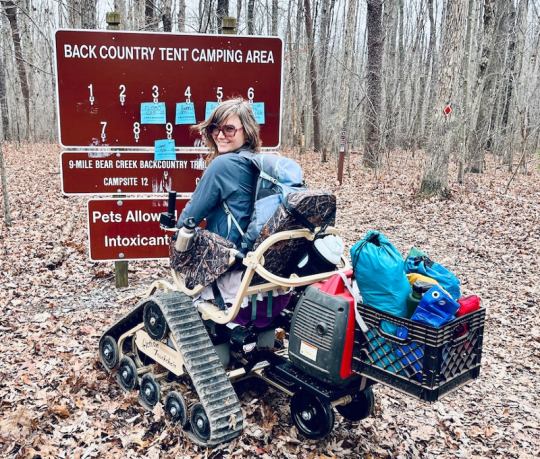
For anyone who has to use a wheelchair, the state says it will soon be easier to be able to enjoy several parks, historic sites and wildlife centers because these locations will provide free all-terrain wheelchairs.
The Georgia Department of Natural Resources said it has partnered with the Aimee Copeland Foundation to provide high-mobility, all-terrain track wheelchairs at 10 different locations across the state. DNR said the initiative “encourages those with mobility impairments to reconnect with nature, explore nature trails, go fishing and attend adaptive hunts.”
3. Electricity-generating windows? Swiss scientists design more efficient transparent solar panels

All that natural light flowing through your windows may one day do much more than brighten your mood. Scientists in Switzerland have reached a new efficiency record for transparent solar cells, paving the way for electricity-generating windows that could help power our homes and devices.
Also known as Grätzel cells, dye-sensitised solar cells (DSCs) are a type of low-cost solar cell that use photosensitised dye attached to the surface of a semiconductor to convert visible light into energy.
4. In France all new large parking lots must now be covered in solar panels starting in july 2023
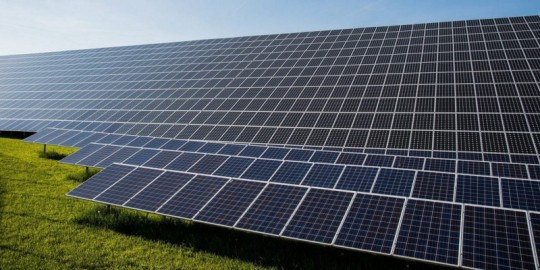
The new provisions are part of French president Emmanuel Macron’s large-scale plan to heavily invest in renewables, which aims to multiply by 10 the amount of solar energy produced in the country, and to double the power from land-based wind farms.
Starting July 1, 2023, smaller carparks that have between 80 and 400 spaces will have five years to be in compliance with the new measures. Carparks with more than 400 spaces have a shorter timeline: They will need to comply with the new measures within three years of this date, and at least half of the surface area of the parking lot will need to be covered in solar panels.
5. Car horns replace gunfire as Ukraine’s troops return to jubilant Kherson

Ukrainian soldiers swept into the southern city of Kherson on Friday, seizing a major symbolic and strategic prize from the retreating Russian army and dealing a bitter blow to President Vladimir V. Putin.
Just weeks after Mr. Putin declared the Kherson region a part of Russia forever, his troops were forced to abandon its capital city, their third major retreat in the war. The setback further dented the once-formidable reputation of an army that has mismanaged logistics and sent unprepared and unmotivated soldiers into battle.
Jubilant crowds poured into the streets, greeting Ukrainian soldiers and waving flags
6. Lab-grown blood given to people in world-first clinical trial

Tiny amounts — equivalent to a couple of spoonfuls — are being tested to see how it performs inside the body. The bulk of blood transfusions will always rely on people regularly rolling up their sleeve to donate.
But the ultimate goal is to manufacture vital, but ultra-rare, blood groups that are hard to get hold of. These are necessary for people who depend on regular blood transfusions for conditions such as sickle cell anaemia.
7. A pod of dolphins got stuck in the mud at low tide — here’s how a N.S. community saved them

According to the Digby Fire Department, there were 16 Atlantic white-sided dolphins, of various sizes, stranded. People of all ages rushed to the scene in Digby on the afternoon of Nov. 4 after it was discovered that 16 dolphins were stranded in the mudflats of an area known as The Joggins.
“We are happy to report that all 16 dolphins eventually were ushered into the water,” the department posted on its Facebook page late in the afternoon. “We are hopeful once the tide keeps rising, they will safely make their way back out to sea.”
- - -
That’s it for this week. If you liked this post you can support this newsletter with a small kofi donation:
Buy me a coffee ❤️
Have a great week ahead :)
523 notes
·
View notes
Text

The lot is now fully green and moving the neighbourhood towards eco-friendliness!
I notice it most when playing at Penny's. It seems like you need one green lot in the neighbourhood, other than your own, in order to move the footprint indicator? Anyway, Jack's lot has: 2 solar panels, 2 wind turbines, one power generator with a green filter (burning only bio fuel), one dew collector, all appliances have the energy-efficient upgrades, a bunch of planters and crops, 3 insect farms (dunno if those help?), and the eco-lot trait. We also have some green NAPs (eco-appliances, green gardening, power conservation, and self-sufficiency). The cabin is fully off-the-grid and self-sufficient in terms of electrity and water, but it's pretty bare bones on the inside (there's no bathroom and no kitchen, except for a fridge).
31 notes
·
View notes
Note
The main problem with nuclear energy in the Americas (at least) is the polluting of indigenous land.
The thing is that that's not unique to nuclear power. Obviously, fossil fuels involve it too, but so do renewables.
Switching to renewables would require a much greater amount of resource extraction than to nuclear. The massive amounts of structural materials required to build millions of solar panels and turbines, compared to a few nuclear power plants, is immense - and the further requirements for energy storage necessitated by the inconsistent power supply mean rare earth metal extraction for batteries, electronics, etc, which also need to be reduplicated across the myriad of power stations required. All power production requires some level of resource extraction. Of existing methods, nuclear requires the least.
Of functionally any metric, nuclear is the most efficient, purely because of the massive power output. For example, coal power actually produces more radioactive waste than nuclear fission, and that waste is pumped directly into the air. If it's waste we're talking about, then we should think about the massive piles of e-waste produced by renewables. Solar panels have a finite service life, and produce electronics waste that can be hazardous to the environment - and a lot of it, because you need millions of panels. Again, nuclear produces less radioactive waste than coal, but nuclear can maintain the scary reputation precisely because it's so efficient, because all the waste it produces is clearly visible, and concentrated in one location - which makes it incredibly easy to handle and store, but also makes it very easy to conceptualise.
Finally, the pollution of indigenous land is a political issue, not a technical one. As long as the colonial state exists, indigenous land will be destroyed, even if there were no electricity - as it was for years. Under indigenous self-governance, this political issue would not exist, and the question would be a technical one. I cannot speak for the indigenous people of the Americas, but on a purely technical level, in terms of the energy requirements of any people on Earth, nuclear power is the most effective option.
102 notes
·
View notes
Text
First off, degrowthers emphatically do not advocate recession or austerity. These flow from the dynamics of capital accumulation that they critique, abhor and seek to overcome. Drawing on socialist, anarchist, decolonial and feminist traditions, their project is societal transformation with radical redistribution, domestically and internationally, to raise living standards for the masses.
Secondly, the distinction between degrowth and the GND cannot be mapped to simple binaries, whether “reduce consumption vs. invest in production,” “reject vs. promote new tech” or “individual sacrifice vs. collective action.” Many opponents of degrowth maintain that electricity should be a human right and available to all the world’s population; most degrowthers would agree. They advocate gargantuan investments in energy-efficiency technologies and renewables. Degrowther Jason Hickel, for example, calls for public investment to be targeted to churning out solar panels, heat pumps and batteries “at a historically unprecedented rate, reminiscent of the industrial retooling that enabled the allies to win the second world war.” A vital actor in pushing for such a program will be organized labor, and this too is recognized by degrowthers. They see powerful unions as essential allies. Workers, after all, are not wedded to endless GDP growth. Rather, their needs are human: security of life and livelihood, opportunities to flourish, respect, community, hope and, above all, a habitable planet.
In short, there is no necessary opposition between degrowth and a GND. Degrowthers do, however, raise caveats surrounding the material implications of expansionary programs — particularly if the whole world shares in them, as it should. While supporting the renewables rollout, they scrutinize its material requirements — in land, for example, or in the coal-powered electricity used to produce much of the clean energy infrastructure. And where McKibben calls for an “all-out push” for EVs, degrowthers warn of the consequences if U.S. car ownership were replicated worldwide: the tonnage of steel, plastic, lithium etc. on the world’s roads would leap by 500 percent, schlepped around in the form of 7 billion automobiles.
What could replace the bulk of cars in a degrowth (or “degrowth-GND”) future? Bicycles and public transport: buses, coaches, rail. These, for degrowthers and many Green New Dealers, ought to be free of charge. On high-speed rail, Green New Dealers such as Huber and Bernie Sanders are vocal supporters, and many degrowthers are too — but again, with caveats. To construct new track, colossal quantities of concrete are poured, each ton releasing an equivalent tonnage of carbon dioxide (CO2). As a source of carbon emissions, only coal, oil and gas are worse, and while low-carbon concrete is beginning to come on stream, it’s expensive and will take years to scale up. England’s “HS2” project is widely, and now even officially, seen as “unachievable,” a costly flop. China, by contrast, proves that high-speed rail rollout can be quick and successful in its own terms. Yet it arrived together with an equally rapid expansion of road transport and aviation that eclipsed any environmental benefits of rail.
35 notes
·
View notes